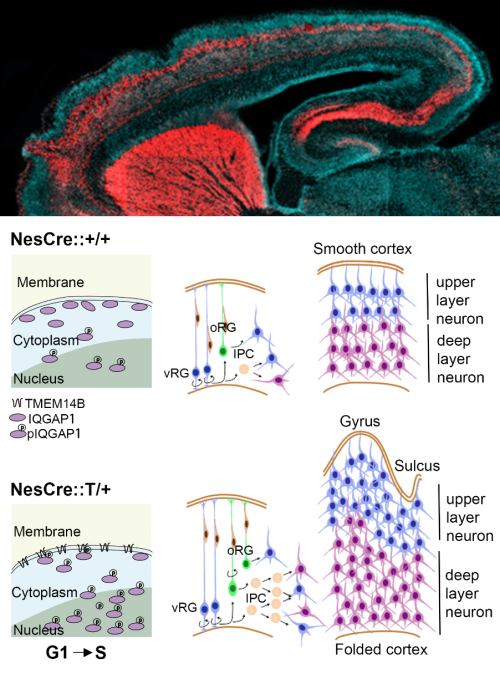Research Explains Molecular Mechanism of Cortical Expansion and Folding
Changes of cerebral cortex size and brain volume have experienced evolutionary expansion across mammals, which is the cellular base of neuronal network complexity. Human brain evolution is associated with rapid expansion and folding of the neocortex. In order to generate huge amount of neurons in a short period of time during brain development, increased number and diversity of neural progenitors (NPs) in humans are possible solutions. Basally located radial glia (oRG), residing in an enlarged outer subventricular zone (OSVZ) and enriched in developing human neocortex, likely play essential roles in this evolutionary expansion. Due to a lack of specific cell marker, their characteristics and relative contributions to neurogenesis are only partially understood.
A research article entitled “The Primate-Specific Gene TMEM14B Marks Outer Radial Glia Cells and Promotes Cortical Expansion and Folding” was published online in the journal Cell Stem Cell on Oct. 12th, 2017. It describes the cellular and molecular mechanism for cortical expansion and gyrification in humans.
Professor WANG Xiaoqun of the Institute of Biophysics (IBP) of the Chinese Academy of Sciences, in cooperation with Professor TANG Fuchou of the Peking University and Professor ZHANG Jun of Capital University of Medical Sciences and colleagues, applied flow cytometry and single-cell transcriptional profiling to characterize human NP subpopulations and identified the primate-specific TMEM14B gene as a marker of oRG cells.
In their research, the researchers found that expressing TMEM14B in embryonic mouse brain induces cortical thickening and gyrification in postnatal mice. TMEM14B drives NP proliferation by increasing the phosphorylation and nuclear translocation of IQGAP1, which in turn promotes G1/S cell cycle transitions. These data show that a single primate-specific gene can drive neurodevelopmental changes that contribute to brain evolution.
This work was supported by grants from the Strategic Priority Research Program of the Chinese Academy of Sciences, Ministry of Science and Technology of China, the National Natural Science Foundation of China.

Fig.1 Mechanism of the regulation of TMEM14B in cortical expansion and folding (Image by WANG Xiaoqun)
Contact:
WANG Xiaoqun
Insititute of Biophysics
Tel:86-10-64887377
Email:xiaoqunwang@ibp.ac.cn

